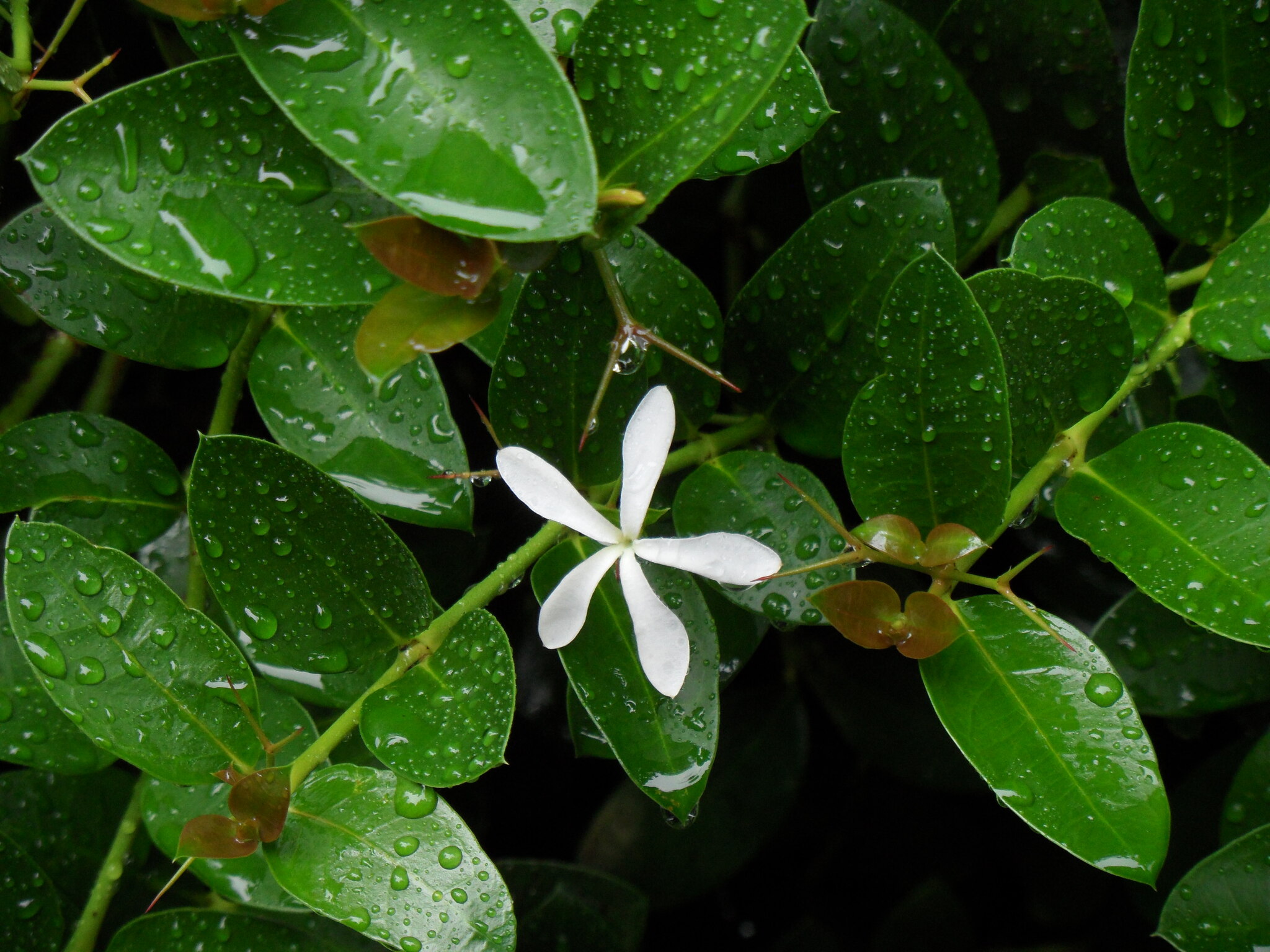
From the latinised version of a Sanskrit vernacular name (Krishna) for C. carandas L.
Shrubs, scramblers or small trees, evergreen; latex white. Stems woody, with opposite, simple or forked spines. Leaves opposite, stalked; blade well developed, mucilage glands absent at base. Inflorescence terminal or extra-axillary, generally like an umbel. Flowers scented, stalked. Corolla salver-shaped; tube cylindrical; lobes convolute in bud, overlapping to the left or right. Corolline corona absent. Stamens enclosed, attached near top of tube, not sticking to style head. Disk absent. Fruit globose to obloid-ovoid, carpels fused into a fleshy berry; seeds 1 to many, flattened, globose, not winged, without hair tufts.
Two species are commonly cultivated, although there is potential for more of the Australian species to be grown. Frost-tolerant.
Cuttings or seeds.
Stems with opposite, simple or forked spines.
About 35 species in Africa, Madagascar, Arabian Peninsula, on the Indian subcontinent, New Guinea, New Caledonia and Australia (4 species).
Codd (1963), Forster (1992d, 1996a).
Source: (2002). Apocynaceae. In: . Horticultural Flora of South-eastern Australia. Volume 4. Flowering plants. Dicotyledons. Part 3. The identification of garden and cultivated plants. University of New South Wales Press.
